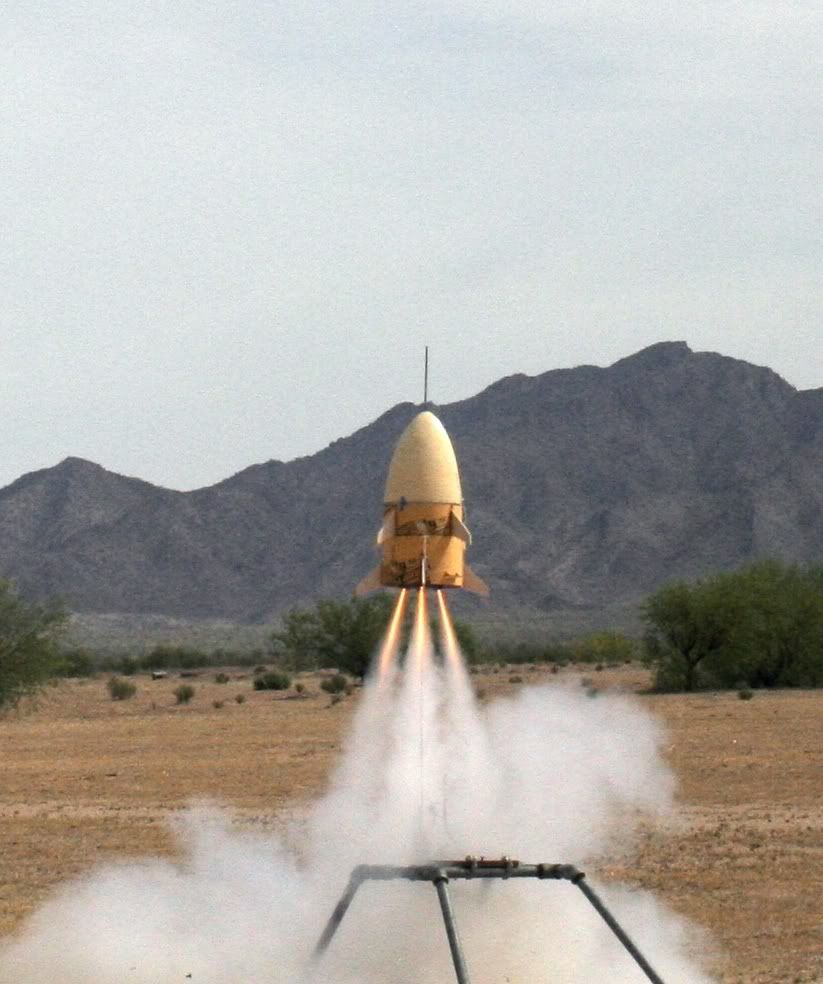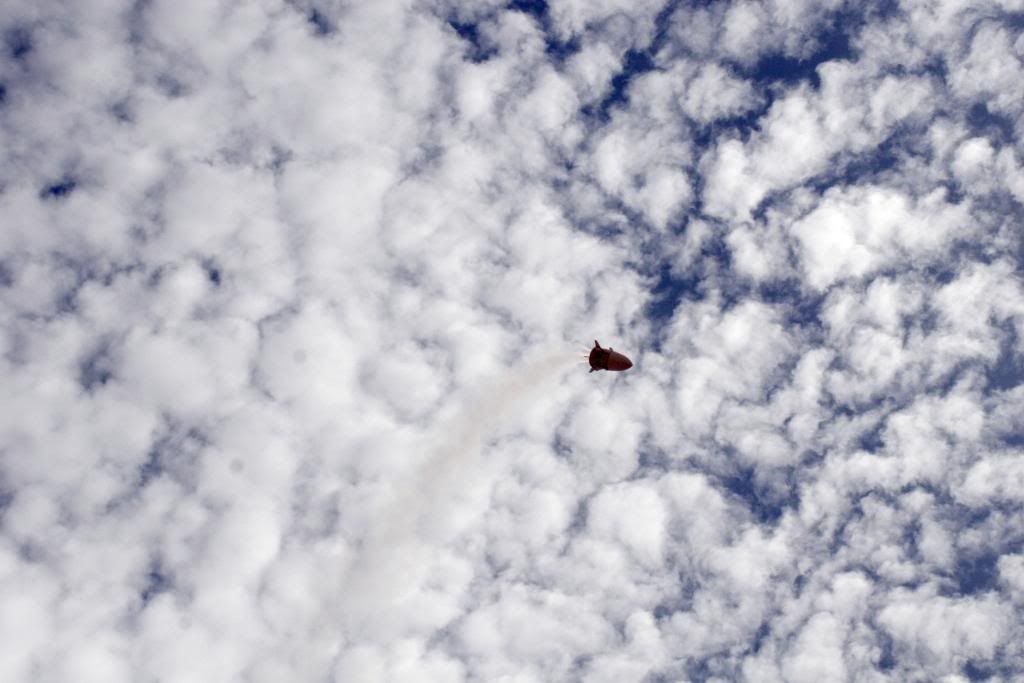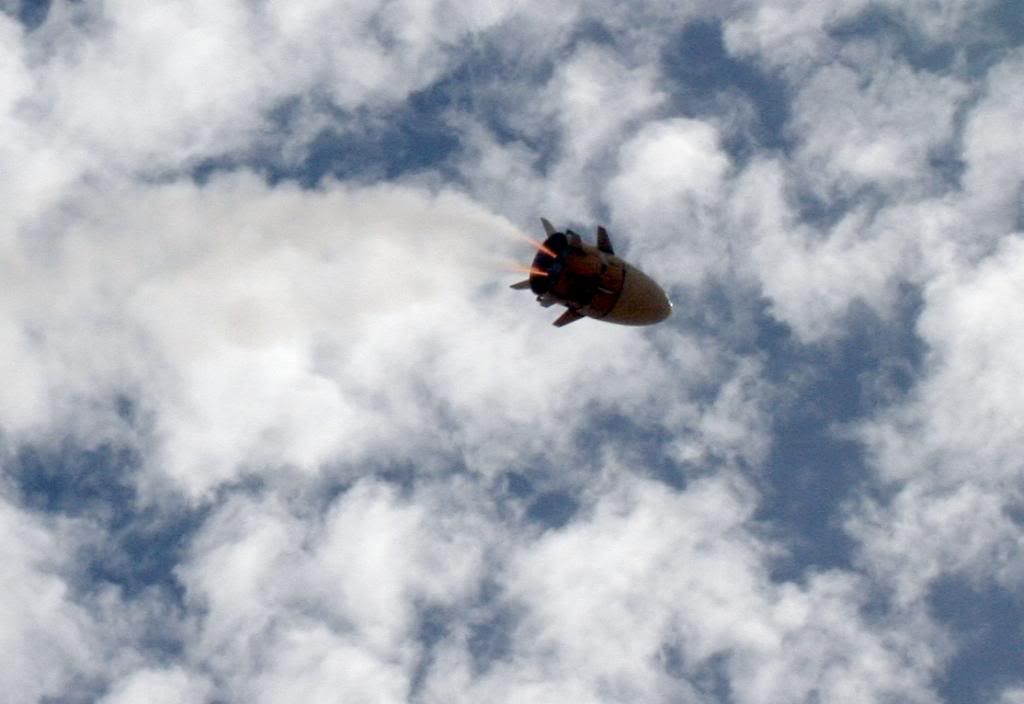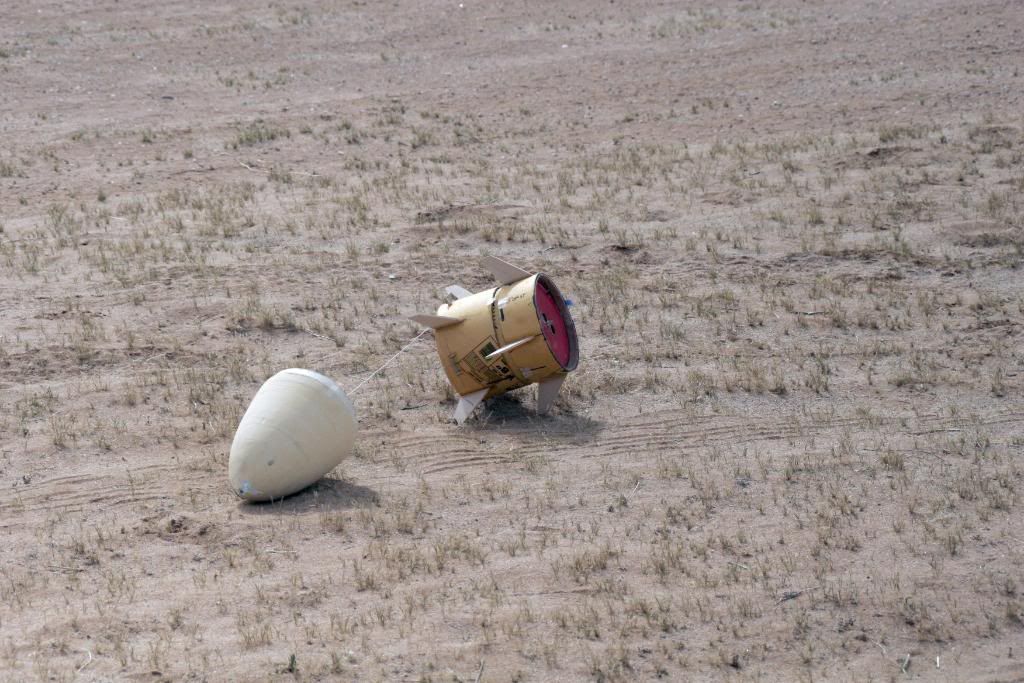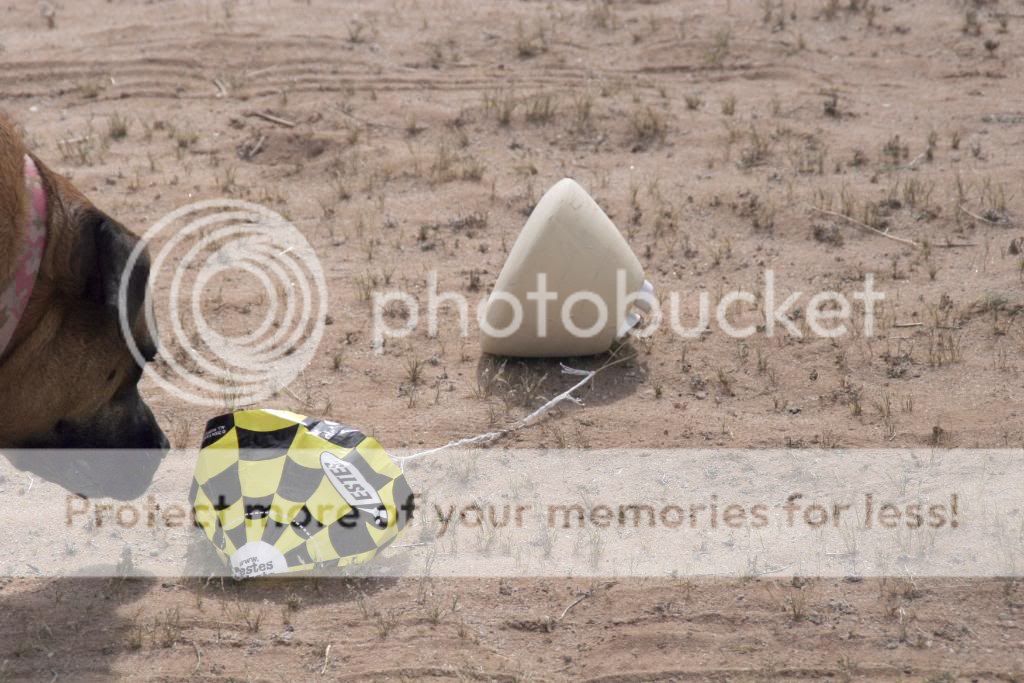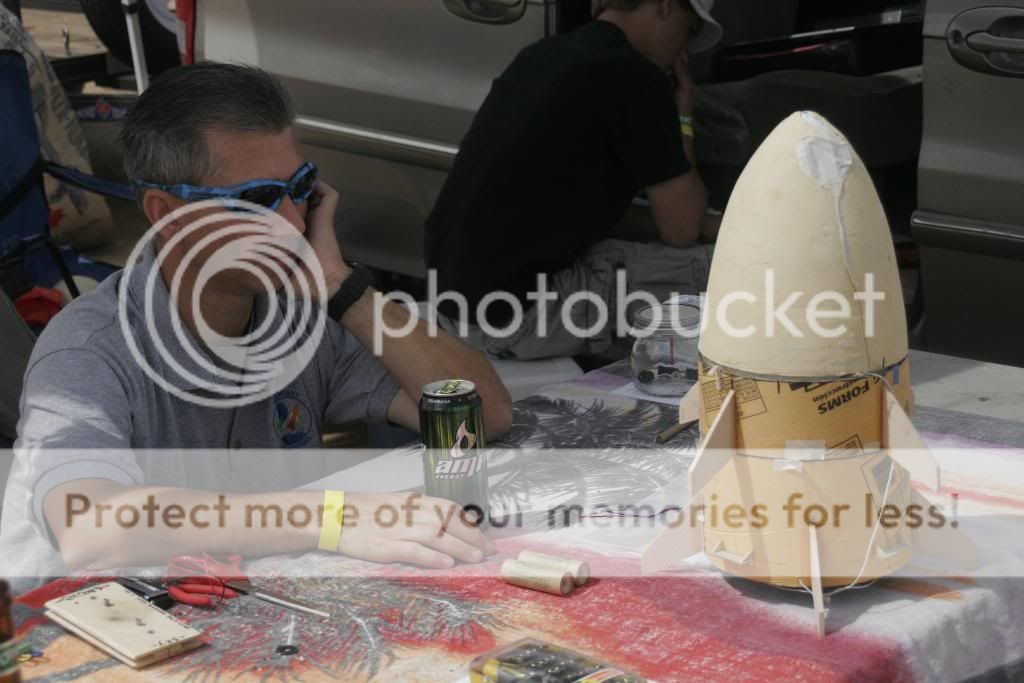El Cheapo
Well-Known Member
- Joined
- Jan 20, 2009
- Messages
- 1,658
- Reaction score
- 7
If you've checked my signature link, you know that I'm on the ARC (Arizona Rocket Consortium) build team. This weekend we flight tested our first prototype on our way to building a 1/2 Scale NASA MLAS (Mass Launch Abort System). Our goal in this first model was to simulate flight characteristics of the vehicle itself as well as the canted cluster configuration. Early on we also decided to add to the difficulty level by simulating drag separation of the Capsule and Shroud as well.
Canted motor configuration as well as shroud lines which bring the motor cage in upside down under chute. Motor choice for this flight was D12-3's.
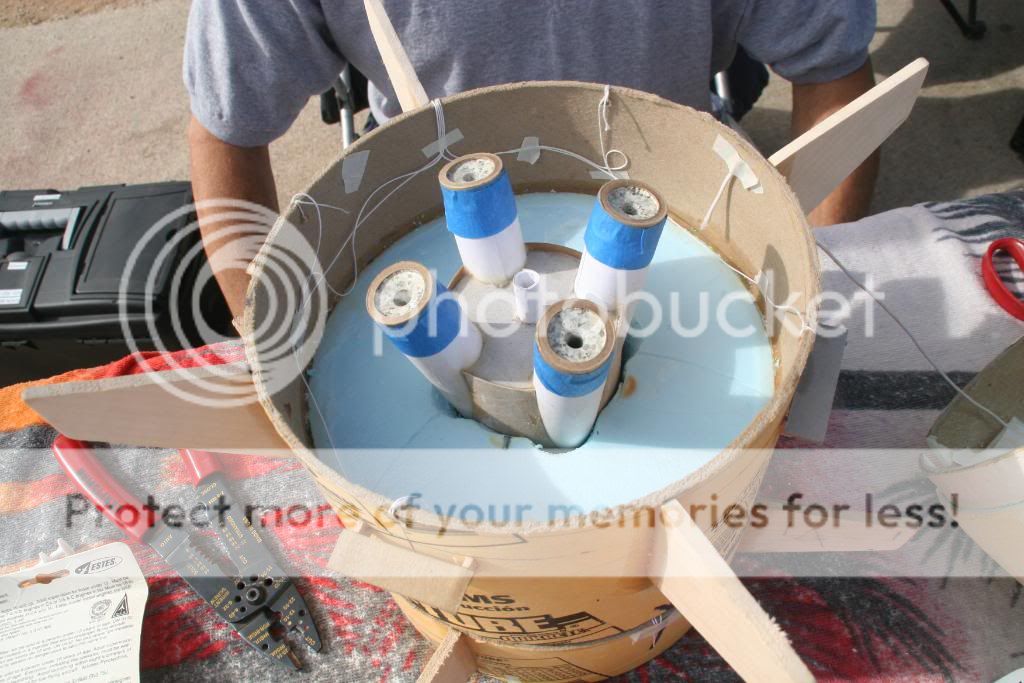
Motor Cage and Coast Skirt. One thing that cannot be seen is we ducted the ejection charges into two pairs, one to separate motor cage from coast skirt and the remaining two to separate the Capsule and Shroud from the coast skirt.
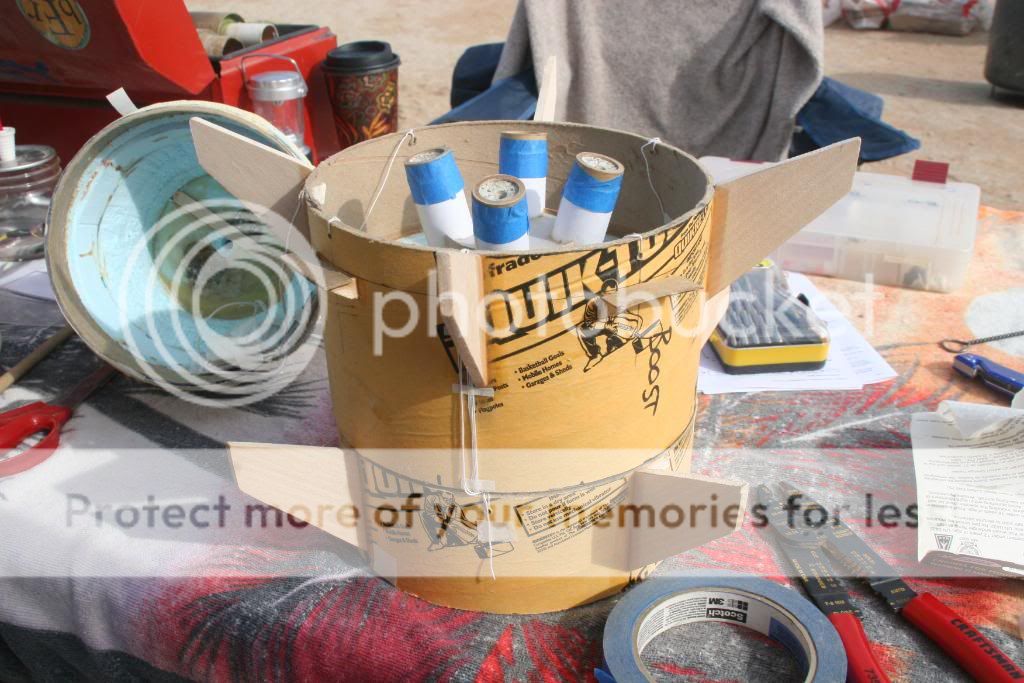
Motor Cage, Coast Skirt, Capsule and Shroud ready for assembly
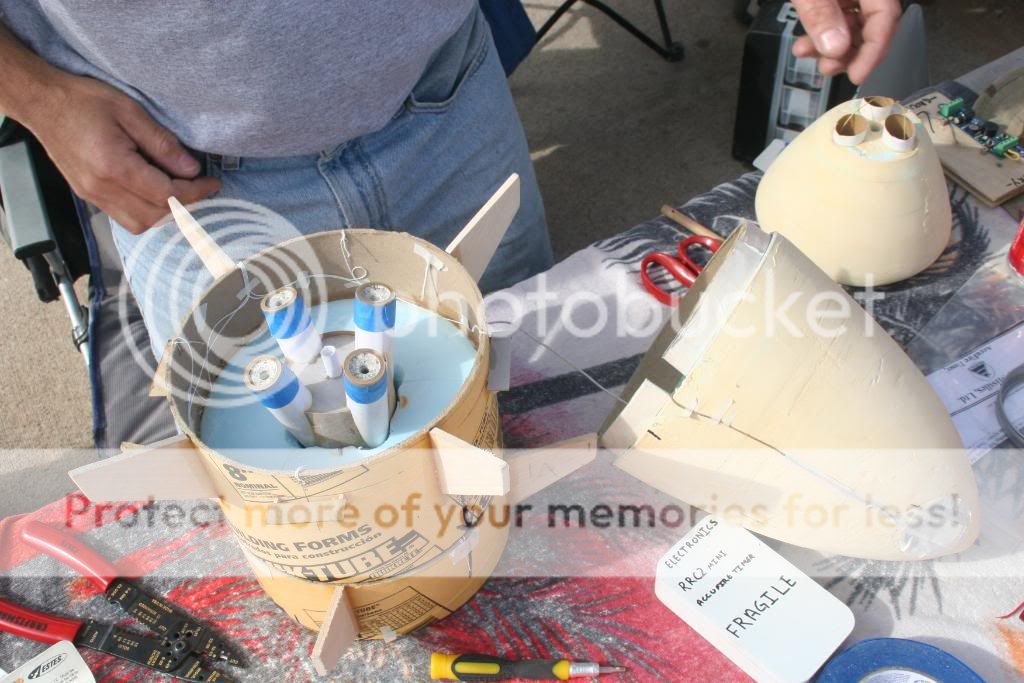
Rick McKee showing the location of the 12oz of noseweight

Team ARC Left to Right: Tom Seemeyer, Rick McKee, Shon Michael. We have some additional "Super Geeks" coming on board down the road to help electronics, deployment as well as the overall construction of the 1/2 scale. Luckily for me, goofy hats are not part of the required dress code.

All prototypes and the 1/2 scale will have a center launch lug. Running straight through the foam proved to be a bad idea without a central lug as it stuck a bit but worked for this test.
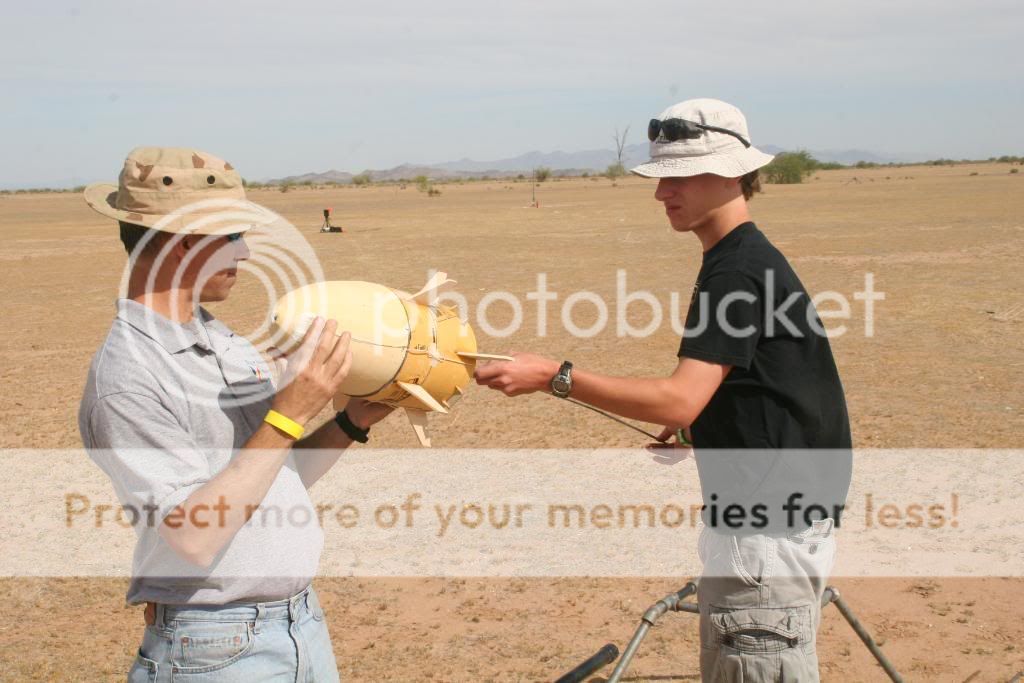
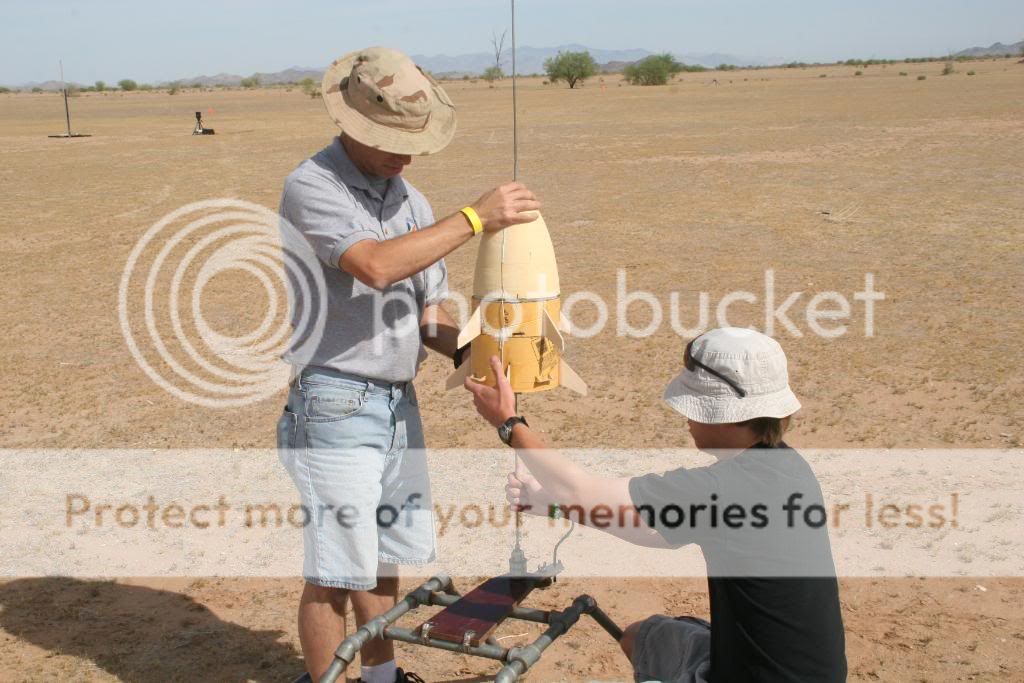
Canted motor configuration as well as shroud lines which bring the motor cage in upside down under chute. Motor choice for this flight was D12-3's.

Motor Cage and Coast Skirt. One thing that cannot be seen is we ducted the ejection charges into two pairs, one to separate motor cage from coast skirt and the remaining two to separate the Capsule and Shroud from the coast skirt.

Motor Cage, Coast Skirt, Capsule and Shroud ready for assembly

Rick McKee showing the location of the 12oz of noseweight

Team ARC Left to Right: Tom Seemeyer, Rick McKee, Shon Michael. We have some additional "Super Geeks" coming on board down the road to help electronics, deployment as well as the overall construction of the 1/2 scale. Luckily for me, goofy hats are not part of the required dress code.

All prototypes and the 1/2 scale will have a center launch lug. Running straight through the foam proved to be a bad idea without a central lug as it stuck a bit but worked for this test.


Last edited:







